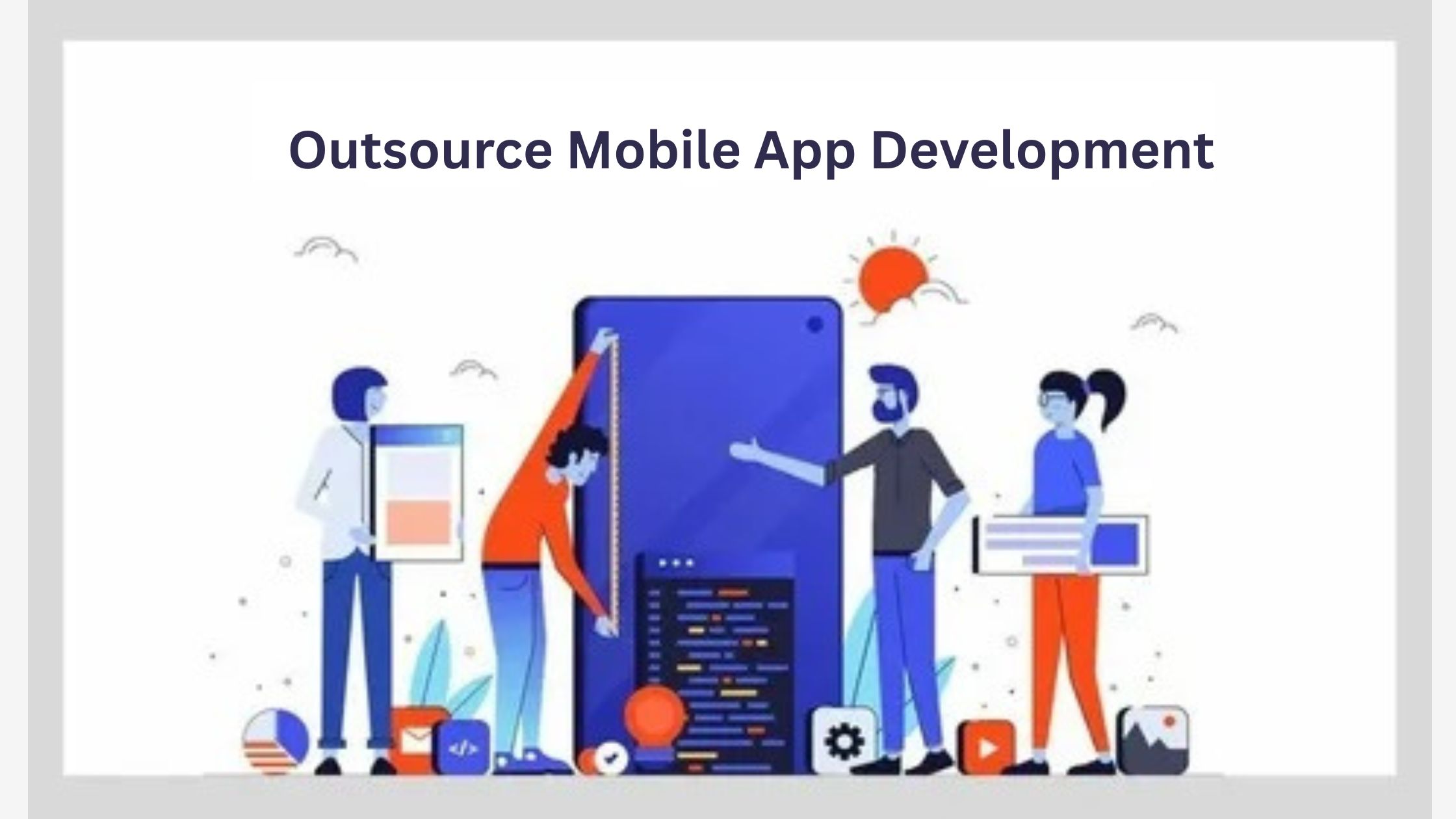How to Outsource Mobile App Development: Benefits, Tips, and Cost

Building a mobile app often requires skills and resources beyond what a business may have in-house. Outsourcing mobile app development has become a popular solution for companies looking to create quality apps quickly without stretching internal teams too thin.
Outsourcing allows you to tap into experienced developers, control costs, and focus on your business goals while your app takes shape. However, success depends on how you approach it.
This article covers the key benefits of outsourcing mobile app development, the best times to do it, how to pick the right partner, tips to manage the project efficiently, and what costs you can expect.
What Is Mobile App Development Outsourcing?
Outsourcing mobile app development means hiring external companies or freelance developers to handle all or part of your app project. Instead of building an in-house team from scratch, you delegate development tasks to a specialized team.
Outsourcing can cover various stages: design, front-end and back-end coding, testing, deployment, and maintenance. This model suits companies that want to launch fast, keep development flexible, or lack internal technical expertise.
Benefits of Outsourcing Mobile App Development
Outsourcing mobile app development offers businesses access to specialized skills, faster delivery, and cost savings without compromising quality.
Access to Skilled Developers
Outsourcing connects you to a vast talent pool. Many agencies and freelance developers bring years of experience in iOS, Android, cross-platform development, and backend integration. Instead of spending months hiring locally, you hire professionals who know what they’re doing.
Faster Time to Market
Outsourced teams work with well-established workflows. They often have project managers, designers, developers, and QA testers ready to start right away. This parallel approach accelerates your app’s release compared to building an internal team.
Cost Efficiency
Hiring full-time employees involves salaries, benefits, office space, and tools. Outsourcing means you pay for the actual work done—no overhead costs. You can choose teams in regions with lower rates or adjust the team size as your budget changes.
Flexibility and Scalability
Outsourcing gives you flexibility to scale your team up or down depending on project needs. Launch a minimum viable product (MVP) first, then add developers for new features later. You stay agile without long-term commitments.
When to Outsource Your Mobile App Development
Consider outsourcing if:
- Your company lacks mobile development experience.
- You have tight deadlines for your app launch.
- You want to reduce operational costs.
- You prefer to test the market with a quick MVP.
- You want to focus your internal team on business strategy instead of coding.
- You need experts to handle complex back-end or third-party integrations.
Avoid outsourcing if your project requires constant, in-depth collaboration with your team or you want to build internal development capabilities long term.
Popular Outsourcing Models for Mobile App Development
Choosing the right outsourcing model helps balance control, cost, and collaboration based on your app’s needs and project scope.
Fixed-Price Model
You agree on the project scope, timeline, and budget upfront. The outsourcing company delivers the agreed work by the deadline. This model works best for projects with clear, unchanging requirements.
Dedicated Team Model
You hire a dedicated team of developers, designers, and testers who work exclusively on your project. You control the work and priorities. This model suits evolving projects or long-term collaboration.
Time and Materials Model
You pay for the actual hours worked and resources used. This flexible model is great when the project scope is likely to change or you want to test new features iteratively.
How to Select the Right Outsourcing Partner
Choosing the right outsourcing partner ensures your mobile app project is delivered on time, within budget, and meets quality standards.
Check Their Technical Expertise
Make sure your partner knows the platforms and technologies your app requires. For example, if you want a native iOS app, they should have solid Swift or Objective-C experience. For Android, Kotlin or Java expertise is essential. Ask about backend skills if needed.
Review Past Projects
Look at their portfolio or case studies. Check if they have experience in your industry or with apps similar in complexity. Past work shows their design sense, code quality, and ability to deliver.
Evaluate Communication Skills
Good communication saves headaches. Your outsourcing partner should respond quickly, ask clarifying questions, and report progress regularly. Ask if they can work in your preferred language and time zone.
Assess Project Management Practices
Inquire about their workflows and tools. Do they use Agile or Scrum? Which platforms manage tasks and bugs? A transparent, structured process helps keep your project on track.
Best Practices for Managing Your Outsourced App Project
Successful outsourcing requires clear communication, solid planning, and ongoing collaboration to ensure your app meets goals and deadlines.
Define Clear Requirements
Write detailed specs: features, target audience, user flow, platforms, and design preferences. Attach wireframes or mockups if possible. Clear instructions minimize misunderstandings.
Set Milestones and Deadlines
Break the project into phases with specific goals and deadlines. Approve work at each milestone before moving on. This approach helps catch issues early and maintain momentum.
Use Project Management Tools
Adopt tools like Jira, Trello, or Asana to track tasks, bugs, and communication. This centralized platform keeps everyone aligned and accountable.
Schedule Regular Updates
Hold weekly or bi-weekly video calls to review progress, ask questions, and share feedback. Face-to-face (even virtual) interaction builds trust and avoids delays.
Cost of Outsourcing Mobile App Development
The cost of outsourcing mobile app development can vary widely depending on several factors. Here’s a breakdown of what influences the price and some rough estimates to give you a sense of the range:
Factors Influencing the Cost
- App Complexity: More screens, features, and integrations require more development hours.
- Design Complexity: Custom UI/UX, animations, and graphics add to the effort.
- Platforms: Building for both iOS and Android costs more than one platform.
- Backend Needs: Databases, APIs, and server infrastructure increase costs.
- QA and Testing: Manual and automated testing adds development time.
- Post-launch Support: Updates and bug fixes may require ongoing budgets.
Common Pitfalls and How to Avoid Them
Outsourcing mobile app developers can offer great benefits like cost savings and access to global talent. However, without careful planning, it can lead to common pitfalls that impact quality, timeline, and budget.
Choosing Only Based on Price
Extremely cheap options often compromise quality and communication. Invest in partners who deliver on time with good results.
Lack of Clear Specifications
Poorly defined requirements cause delays and extra costs. Spend time on the project brief to save headaches later.
Ignoring Time Zone Differences
Big time gaps can delay communication. Choose partners with overlapping working hours or plan meetings carefully.
No Signed Agreement
Always sign a contract with payment terms, intellectual property rights, confidentiality, and deadlines.
Skipping Testing
Testing is essential to catch bugs and usability issues. Make sure your partner has a solid QA process.
Conclusion
Outsourcing mobile app development offers clear advantages for businesses looking to save time, reduce costs, and access expert developers. Success depends on selecting the right partner, choosing the best outsourcing model, defining your project clearly, and managing communication efficiently.
By following these tips, you can launch your app faster, avoid common mistakes, and keep costs under control. Outsourcing empowers you to build powerful mobile apps while focusing your energy on growing your business.



